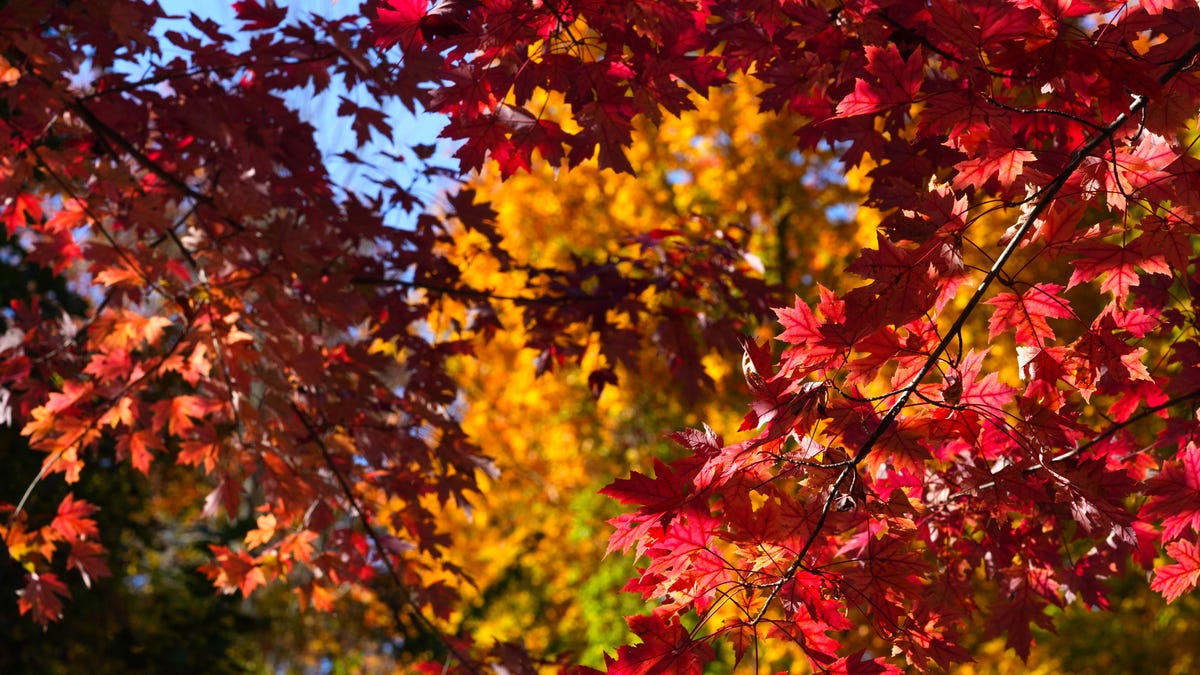Where to find the best fall foliage? A guide to fall colors and forecasts.
Peak fall colors are just around the corner for many regions. Here’s when and where to see the brightest hues.
As summer heat fades away, the season for admiring autumn leaves is nearly upon us.
Forecasts indicate that peak fall colors will first appear in the northeastern United States by early October, gradually moving southward. The situation is more intricate in the western regions, where elevation significantly influences the timing of fall foliage.
Right now, hints of fall color are becoming visible in the Northeast, particularly in the higher elevations of northern New England. Additionally, some areas in northern Minnesota are starting to show autumn colors, although most trees in the Upper Midwest remain green, according to WeatherBug.
Fall colors don’t burst forth all at once but change at different rates depending on the tree species. For example, maple and sugar maple trees, known for their stunning yellow and orange hues, are often among the first to display color changes, as per the Old Farmer’s Almanac.
This year’s drought and high temperatures may affect the fall display. Here’s what to keep in mind:
When can we expect leaves to change colors this fall?
Amanda Gallinat, an assistant professor of environmental studies at Colby College, predicts a typical autumn, with leaves changing color in early October in northern regions, mid to late October in the mid-Atlantic, and early to mid-November in southern areas of the U.S.
For those searching for fall colors in the Western states, it’s essential to monitor your specific location using this peak fall foliage map.
Where are the best places to view fall foliage in 2024?
AccuWeather predicts vibrant fall colors will be prominent in parts of the Northeast and especially in the Midwest. Meteorologist Paul Pastelok notes that the brightest shades of red, orange, and yellow are expected to be found in a zone extending from the interior Northeast and Great Lakes down to the Mississippi River Valley.
“We’re expecting the Midwest to be the prime spot for foliage, where trees should display beautiful reds and oranges, potentially reaching areas in the Ozarks and southern Missouri,” Pastelok mentioned.
In the West, tree physiologist and pathologist Kevin Smith from the U.S. Forest Service told YSL News that the aspen trees in Colorado are looking promising. “Colorado is expected to show great fall colors,” he remarked.
Additionally, the Upper Peninsula of Michigan, the Laurel Highlands in Pennsylvania, and Hot Springs, Arkansas, have been named the top spots for fall foliage by YSL News’s 10Best Readers’ Choice Awards. View the complete list.
Will heat and drought influence autumn colors?
The U.S. Forest Service states that a severe summer drought can postpone the arrival of fall colors by several weeks. The drought was particularly severe in the mid-Atlantic and central Appalachians this summer, which might delay the fall foliage season in those areas, according to Pastelok.
A warm spell during fall may also reduce the vibrancy of autumn colors, as noted by the U.S. Forest Service. The latest forecast from the Climate Prediction Center indicates a warmer-than-average fall is anticipated across nearly the entire U.S.
Fall foliage map reveals peak color dates
Here’s a county-by-county overview of the projected fall foliage changes across the United States in 2024:
Is climate change impacting fall foliage?
“Historical data, satellite imagery, and research indicate that the timing of fall foliage is generally getting later due to the increase in temperatures triggered by climate change,” Gallinat informed YSL News via email. “In New England, peak foliage now occurs up to a week later on average compared to the 1950s.”
“We foresee continued delays as temperatures rise, while increasing instances of extreme weather events like droughts and floods might lead to unexpected early changes for some sensitive species. With some species changing earlier and others later, we anticipate a longer duration but lesser intensity for the leaf-peeping season.”
Additionally, weather conditions can impact leaf-peeping in unexpected ways, such as smoke from wildfires obstructing views. This has been notably the case in recent autumns, Smith noted.

